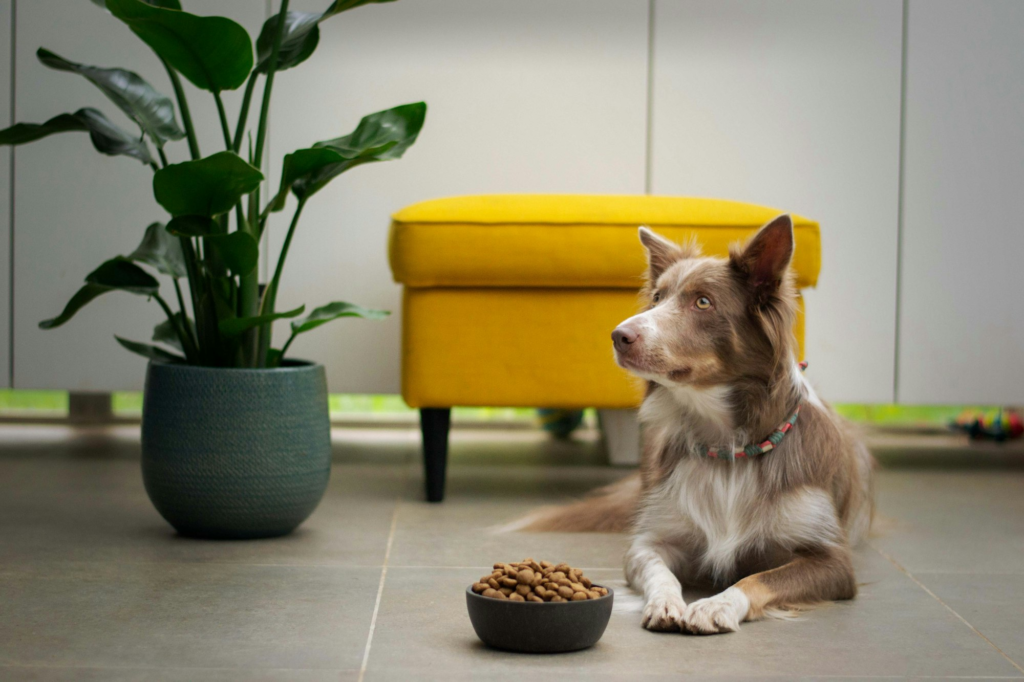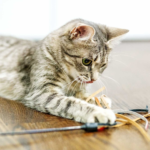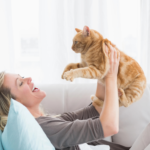Food-related aggression is a common issue among cats, manifesting as growling, hissing, or even swatting during mealtime. This behavior can stem from various factors, including competition, fear, or previous negative experiences. Addressing food-related aggression is essential for a peaceful home and ensuring that mealtimes are enjoyable for both you and your feline friend. Here are some effective strategies to manage and reduce food-related aggression.

1. Understand the Causes
Resource Guarding:
One primary cause of food-related aggression is resource guarding. Cats may become possessive of their food, especially if they’ve had to compete for resources in the past. This behavior often stems from early experiences, such as being raised in a multi-cat environment with limited access to food.
Fear or Anxiety:
Cats that have experienced traumatic events or have anxiety may act aggressively around their food. This can include fear of being attacked or having their food taken away, leading them to defend their food aggressively.
Health Issues:
Sometimes, food-related aggression can be linked to underlying health problems. Conditions like dental pain, gastrointestinal issues, or hunger can make a cat more irritable and aggressive during mealtime. If you notice sudden changes in behavior, a veterinary check-up is essential to rule out medical causes.
2. Create a Calm Feeding Environment
Separate Feeding Areas:
If you have multiple cats, provide separate feeding stations to reduce competition and aggression. Place food bowls in different areas of the house, ensuring each cat has their own space where they can eat undisturbed.
Quiet and Safe Space:
Ensure that your cat’s feeding area is quiet and free from distractions. A calm environment helps reduce stress and anxiety, making mealtime more pleasant. Avoid placing the food bowl near high-traffic areas or where other pets or people might intrude.
3. Establish a Consistent Feeding Routine
Regular Schedule:
Feed your cat at the same times each day to create predictability and routine. Consistency helps reduce anxiety and allows your cat to anticipate mealtime without stress or aggression.
Pre-Meal Preparation:
Prepare and serve your cat’s food in advance to minimize disruptions during mealtime. Avoid hovering or making sudden movements that might startle your cat and trigger aggressive behavior.
4. Use Positive Reinforcement

Reward Calm Behavior:
Encourage positive behavior by rewarding your cat when they exhibit calm and non-aggressive behavior around their food. Use treats, praise, or affection to reinforce good behavior and create a positive association with mealtime.
Gradual Desensitization:
If your cat is particularly aggressive, gradual desensitization can help. Start by offering food from a distance and gradually decrease the distance as your cat becomes more comfortable. Pair this with positive reinforcement to help your cat associate your presence with positive outcomes.
5. Implement Behavior Modification Techniques
Training with Commands:
Train your cat to respond to commands such as “sit” or “wait” before serving their food. This training helps establish control and reduces the likelihood of aggressive behavior. Practice these commands regularly to reinforce the behavior.
Use Food Dispensers or Puzzle Toys:
Food dispensers or puzzle toys can make mealtime more engaging and reduce aggression. These toys provide mental stimulation and slow down eating, which can help alleviate some of the stress associated with food guarding.
6. Addressing Aggression Among Multiple Cats
Feeding Stations:
For households with multiple cats, set up individual feeding stations and feed them at the same time but in separate locations. This reduces competition and aggression during mealtime.
Monitor Interactions:
Observe your cats’ interactions during feeding times. If aggression occurs, try to identify the triggers and adjust feeding arrangements accordingly. Ensuring that each cat has a safe and comfortable space can help prevent conflicts.
7. Seek Professional Help
Consult a Veterinarian:
If food-related aggression persists despite your efforts, consult with a veterinarian. They can help rule out medical issues and provide advice on managing aggression.
Behaviorist Consultation:
In severe cases, a professional animal behaviorist can offer tailored strategies to address food-related aggression. They can assess your cat’s behavior and develop a customized plan to help resolve the issue.
Conclusion
Addressing food-related aggression involves understanding the underlying causes, creating a calm feeding environment, establishing a consistent routine, and using positive reinforcement. By implementing these strategies, you can reduce aggression and ensure a more harmonious mealtime experience for both you and your cat. With patience and consistency, you can foster a peaceful feeding routine that enhances your cat’s well-being and your overall relationship with your feline friend.


